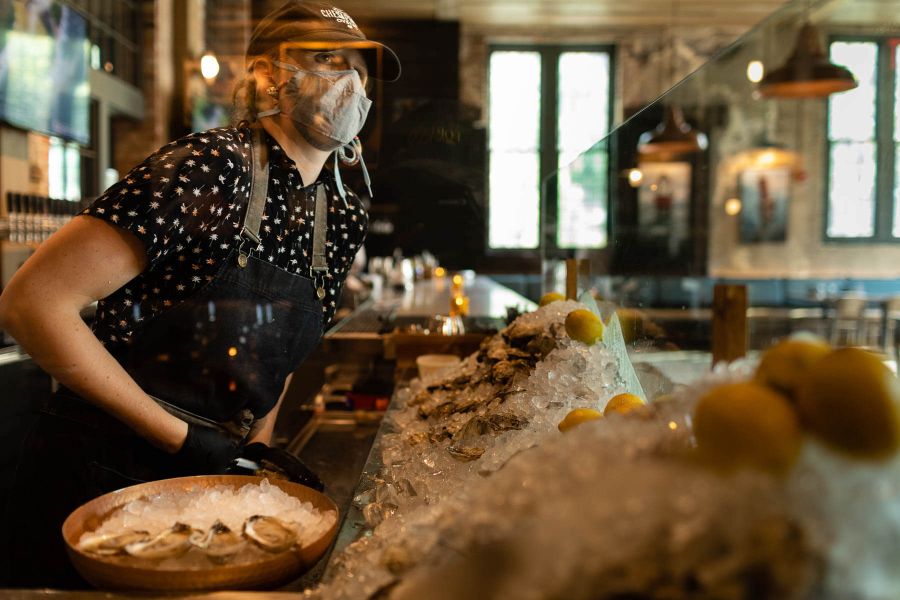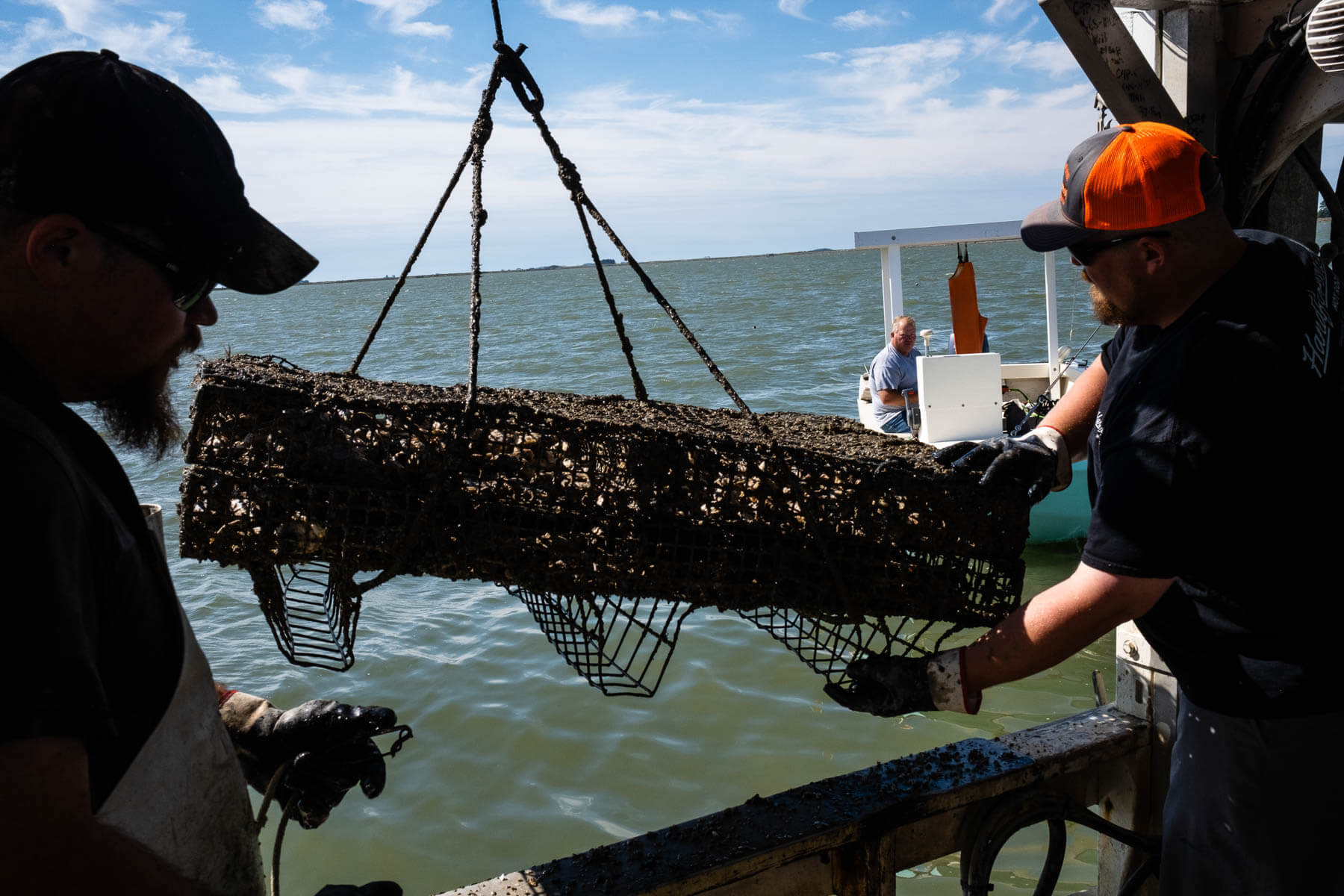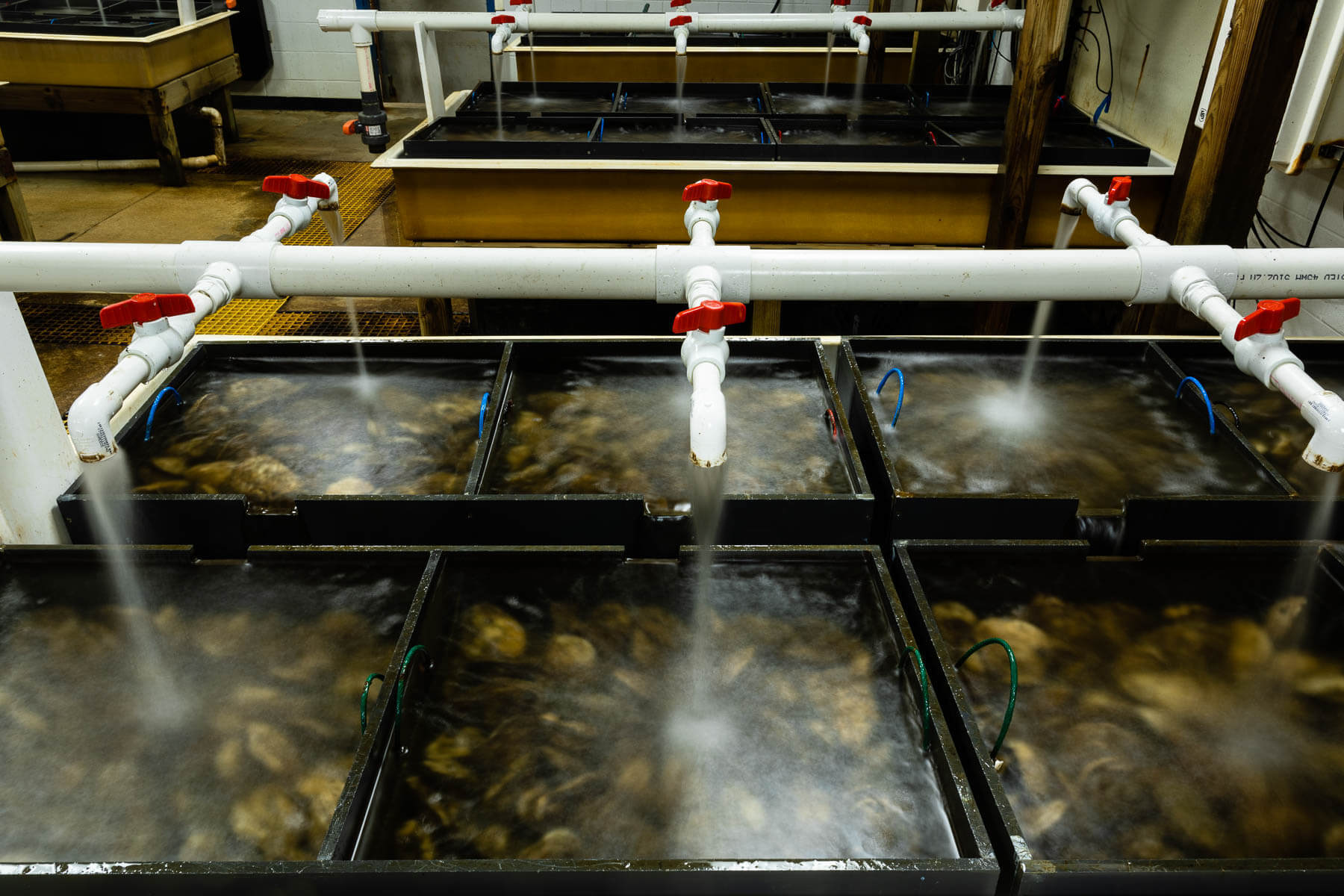Chesapeake Bay nonprofits lend a helping hand to oyster aquaculture industry

This is the second installment of a two-part series on oyster aquaculture in Maryland. Read the first installment.
After months of restrictions placed on restaurant dining, you would be hard pressed to find a Chesapeake Bay oyster farmer who’s not concerned about the future of their business.
Restaurants are where a vast majority of oysters are sold, and for business owners who run an oyster farm as well as a restaurant, the economic impacts associated with the COVID-19 pandemic hit even harder. Without help, these Bay business owners may have to shut down their operations and remain closed even after restaurant restrictions are lifted. Considering the many economic and environmental benefits of this promising industry, this would be a tragic outcome for our watershed as a whole.
Fortunately, a variety of nonprofits who understand the industry’s potential as a profitable yet sustainable means of resourcing the Bay are trying to make sure that doesn't happen. Environmentalists are often portrayed as being at odds with those who profit off natural resources. But in the case of oyster farming in Maryland, multiple organizations and community leaders are focusing their limited resources on seeing business owners through the COVID-19 pandemic.
Encouraging direct-to-consumer sales
With restaurant dining restricted, oyster farmers must sell their product to people directly in order to turn a profit. The new model is not only less profitable but filled with a variety of logistical hurdles, not to mention an easily spoiled product.
The Chesapeake Bay Foundation is one of many organizations doing all it can to facilitate those direct-to-consumer sales. The organization has set up a website that lists locations where you can purchase locally farmed oysters, and is also sponsoring pop-up shops for local oyster sales and promoting the events online. Just before Thanksgiving, the organization also sponsored the 2020 Maryland Shellfish Aquaculture Conference, which gave participating businesses the chance to share the marketing, sales and finance tips they’ve learned to be successful in the time of COVID-19.
Helping consumers find and purchase oysters is helpful, but it’s only half the battle. Because oysters need to be kept fresh, farms and restaurants must sell them closed, which means consumers need to shuck the shells themselves. To confront this challenge, Maryland Sea Grant developed a “shuck at home” video series to teach first-timers how to open up an oyster with tools they have in their kitchens. True Chesapeake Oyster Company, an oyster farm and restaurant that gets its harvest from the St. Jeromes Creek in Southern Maryland, also developed a tutorial video to promote at-home shucking. Another oyster bar, Dylan’s Oyster Cellar, now sells shucking knives on its website, along with the bags of oysters it purchases from growers.
To further increase purchases, True Chesapeake has partnered with MOM'S Organic Market in Baltimore to sell its oysters in the aisles of its Hampden location. The partnership has become a valuable means of storing and selling all the excess oysters accruing on the farm; and at the grocery store, shells are recycled by the Oyster Recovery Partnership so that they can regrow in the Bay.
All these small business improvisations are a means of keeping the industry afloat during the pandemic. While organizations can help farmers run pop-ups, promote their products or sell them the way MOMs has, it still comes down to consumers choosing to support the businesses more often and in different ways than they traditionally would.
“There have been some folks who have emerged as loyal followers who, if not every week, are getting oysters a few times a month, and that’s made a huge difference for us,” said Scott Budden, founder of Orchard Point Oyster Company in Stevensville, Maryland. “There is a lot of gratitude for those folks.”

Buying excess oysters for oyster reefs
One of the most challenging parts of oyster farming during the pandemic is that when you can’t sell enough oysters, they stay at the farm growing past the desirable market size and taking up space where a new harvest would be planted.
In an effort to help oyster growers, The Nature Conservancy (TNC) concocted the Supporting Oyster Aquaculture and Restoration (SOAR) program, an initiative that purchases oysters from farmers struggling due to the COVID-19 pandemic and uses them on oyster reef restoration projects.
SOAR started on the West Coast but will soon expand to East Coast states, including Maryland. Come January, the organization is anticipating working with over 20 different growers in Maryland to purchase and move nearly one million oysters.
“This has been a difficult time for our whole region and, despite the challenges, it’s critical that we support aquaculture, oysters and the role they play in the Chesapeake Bay’s future,” said Mark Bryer, director of TNC’s Chesapeake Bay operations. “This program gives us a great opportunity to simultaneously support both our local economy and the Bay’s health.”
TNC’s initiative is done in partnership with The Pew Charitable Trusts and in coordination with similar efforts undertaken by the U.S. National Oceanic and Atmospheric Administration (NOAA) and the U.S. Department of Agriculture.

Becoming more resilient in the future
In 2018, record-setting rainfall created low-salinity levels in the Bay and its tributaries that depleted farmed oyster stocks across the region. As a changing climate brings severe weather to the Bay region more often, as it is projected to do, aquaculture operations will continue to be disrupted.
Scientists at Morgan State University are currently researching ways to produce oysters that are more tolerant to low salinity levels within Maryland’s waterways. The research, which is sponsored by the Maryland Sea Grant’s Research Experience for Undergraduates program, will focus on the commonly grown eastern triploid oyster. According to Maryland Sea Grant’s website, triploid oysters are “an important component of the Maryland aquaculture industry because of their fast growth and sustained high meat yield.”
Beyond addressing the impacts of climate change, environmental groups are finding ways to make the industry more efficient overall. Researchers at Horn Point Laboratory in Cambridge, Maryland for example, are collaborating with both watermen and oyster farmers to cultivate disease-resistant oysters as well as develop new designs for cages and processing equipment. Partnerships between Horn Point and waterman have led to Oyster Futures, an effort that seeks to “develop a package of consensus recommendations for oyster policies and management that meet the needs of industry, citizen and government stakeholders in the Choptank and Little Choptank rivers.”
At the Chesapeake Bay Foundation’s 2020 conference, panelists also discussed innovations in technology that could improve the aquaculture industry, including software to track and manage oyster populations, robots to help tend aquaculture gear and new processing methods. Even amid the pandemic, oyster growers are still looking ahead and thinking about how to secure the industry’s future.
At the end of the day, what oyster farmers will always need most is clean and healthy water. The Chesapeake Bay Program oversees a variety of efforts to protect the Bay and its tributaries. Whether that’s curbing stormwater runoff, reducing the impacts of toxic contaminants or preserving vital aquatic life, the work of the partnership benefits all who rely on the Bay and its tributaries, including oyster aquaculture businesses.

Comments
There are no comments.
Thank you!
Your comment has been received. Before it can be published, the comment will be reviewed by our team to ensure it adheres with our rules of engagement.
Back to recent stories